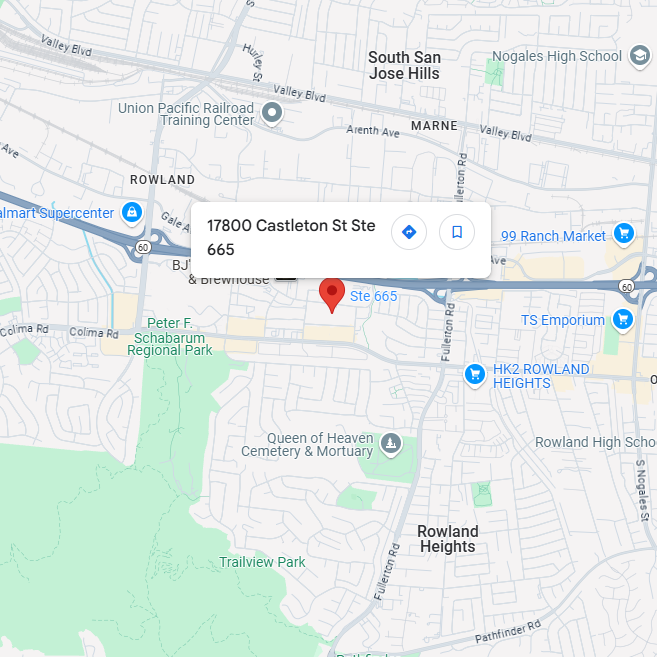EDITGENE CO., LTD

17800 Castleton St. Ste 665. City of Industry. CA 91748

info@editxor.com

+1-833-226-3234 (USA Toll-free)
+1-224-345-1927 (USA)
+86-19120102676 (Intl)

Technical Support

Support Center
Beijing Time: Monday to Friday, 8:00 AM - 6:00 PM
Toll-Free (USA): +833-226-3234
Direct Line (USA): +1-224-345-1927
Email: techsupport@editxor.com

After-Hours Support
Beijing Time: Monday to Sunday, 8:00AM - 6:00 PM
International Line: +86-19120102676
Email: info@editxor.com

Facebook Messenger
Reach out to us on Facebook Messenger for personalized assistance and detailed information.

Linkedin
Engage with us on LinkedIn for professional inquiries, the latest blogs, discoveries, and updates on our innovative work.
FAQ
What is Gene Interference and How Does It Work?
Gene interference (gene knockdown) is a technique that partially suppresses the expression of target genes using small RNA molecules (such as siRNA or shRNA) or CRISPRi systems:
siRNA/shRNA: The siRNA associates with the cellular RISC complex to degrade target mRNA, thereby blocking protein translation.
CRISPRi: A modified dCas9 protein binds to a guide RNA (gRNA) and blocks the gene promoter, repressing transcription without cleaving DNA.
Applications: Gene interference is widely used for functional genomics studies, disease mechanism investigation, and drug target validation.
What types of gene interference technology services do we mainly provide? (including siRNA transfection, shRNA-mediated lentiviral/adenoviral stable knockdown, and CRISPRi-based transcriptional repression.)
| Technology | Applications | Delivery Format |
|---|---|---|
| siRNA transfection | Rapid validation (effects observed within 72-96 hours) | Cells post-interference/experimental report |
| shRNA viral vectors | Long-term suppression (stable cell line screening) | Viral particles/stable knockdown cell lines |
| CRISPRi | High-specificity gene inhibition | dCas9-expressing cell line and gRNA vector |
Differences Between siRNA, shRNA, and CRISPR Interference (CRISPRi) and How to Choose:
| Parameter | siRNA | shRNA (viral vector) | CRISPRi |
|---|---|---|---|
| Duration of Effect | Transient (5-7 days) | Long-term (stably maintained through passages) | Long-term and stable |
| Cell Type Compatibility | Easily transfected cells | Broad spectrum, including hard-to-transfect cells | Requires pre-established dCas9 cell line |
| Off-target Risk | Medium to high | Medium | Very low |
| Typical Use | Rapid validation | Animal or cell models | High-precision gene regulation |
What is lentivirus packaging?
Lentivirus is a gene delivery tool that introduces exogenous genes into cells. By using tool cells such as 293T, lentiviral vectors carrying target DNA fragments are packaged into lentiviral particles with cell-infectious activity. This packaging process includes constructing lentiviral vectors, preparing packaging plasmids, culturing tool cells, transfecting plasmids, collecting viral particles, purifying and concentrating viral particles, and titration.
What are induced pluripotent stem cells (iPSCs)?
Induced pluripotent stem cells (iPSCs) are a type of cell that reprogram the somatic cells into a pluripotent state. They have characteristics similar to embryonic stem cells and can differentiate into almost all cell types in the body. Therefore, scientists can use IPSC cells to generate various cell types in vitro for research and treatment, instead of using embryonic stem cells to achieve the experimental purposes.
Why choose EDITGENE, and what are EDITGENE’s main advantages in gene knock-in technology?
EDITGENE’s advantages in gene knock-in technology include:
Guaranteed results: With 10 years of CRISPR gene editing experience and a team of PhDs from world-renowned institutions offering one-on-one support.
High precision: EDITGENE’s optimized tools reduce off-target effects, enhancing editing accuracy.
High efficiency: EDITGENE’s technology platform improves knock-in success rates, accelerating experimental progress.
Customized service: Tailored knock-in solutions to meet specific research or therapeutic goals.
What role does gene knock-in play in drug development?
Gene knock-in plays a crucial role in drug development. It is used in target validation by introducing specific genes into cell lines or animal models to confirm drug target efficacy. It also aids in establishing disease models, testing drug efficacy and safety in these models, and supporting drug screening through high-throughput screening in knock-in cell lines to identify potential drug candidates. Additionally, gene knock-in helps uncover drug mechanisms, optimize drug structure, and improve dosing strategies, expediting drug development while enhancing efficacy and safety.
What is gene overexpression?
Gene overexpression refers to using various techniques to significantly increase the expression level of a specific gene in cells or organisms. This is often achieved by introducing additional gene copies or using strong promoters to drive gene expression.
Why choose EDITGENE to establish stable overexpression cell lines?
EDITGENE brings 10 years of CRISPR-based cell editing experience and offers one-on-one support from a team of PhDs from globally recognized institutions.
Why conduct gene overexpression?
Gene overexpression aids in studying the function of specific genes, revealing their role within the organism. It is also commonly used in drug screening, vaccine development, and protein production. For example, by overexpressing a therapeutic protein, researchers can evaluate its efficacy in disease models.
How do I choose between a whole-genome or subgenomic CRISPR library?
CRISPR libraries can be divided into whole-genome libraries and subgenomic libraries. If the goal is to perform screenings across the entire genome, a whole-genome library is the best choice. Such libraries typically contain sgRNAs targeting the entire genome. If the research focus is specific, such as targeting only particular gene families or specific signaling pathways, a subgenomic library can be chosen to reduce unnecessary screening workload and costs.
What is monoclonal screening, and why is it so important in gene editing research?
Monoclonal screening is the process of isolating a single clone from a mixed pool of cells and expanding that clone into a cell line. Monoclonal screening ensures that the cell lines used originate from a single cell, guaranteeing a high degree of genetic background consistency. After cells are gene-edited or genetically modified, the genetic background differences among the cells in the initial cell pool can be significant, making subsequent experimental results inaccurate. By using monoclonal screening, researchers can obtain cell populations with consistent genetic backgrounds and stable gene edits, allowing for stable and accurate monitoring of phenotypic changes.
What unique advantages does EDITGENE offer for monoclonal screening services?
EDITGENE utilizes industry-leading 3D single-cell printing technology, which enables precise isolation and positioning of individual cells, significantly increasing the success rate and efficiency of monoclonal screening. This technology is widely applied in biomedicine research, antibody development, drug screening, and therapeutic selection, showcasing broad application prospects in cell research.
How does EDITGENE ensure the purity and stability of cells during monoclonal screening?
EDITGENE’s 3D single-cell printing technology employs non-contact operation, avoiding mechanical damage and background contamination, which helps maintain cell integrity and biological activity. This technology also minimizes human error in the traditional limited dilution method of monoclonal selection, ensuring the reliability of screening results.
How do I choose suitable cells for library screening?
Cell selection can follow these principles:
1.It should align with the research objectives.
2.The genes targeted by the sgRNA library should correspond to the cell's lineage.
3.The cells should be capable of stable passaging.
4.The transfection efficiency should be high.
5.Avoid primary cells whenever possible. Primary cells cannot be stably passaged and may experience significant cell death during the library screening process, which can hinder experiment completion. If primary cells must be used for library screening, mitigating this risk can be achieved by lowering cell coverage and choosing a library with fewer gRNAs to minimize the cell pool size and shorten the experimental duration.
1.It should align with the research objectives.
2.The genes targeted by the sgRNA library should correspond to the cell's lineage.
3.The cells should be capable of stable passaging.
4.The transfection efficiency should be high.
5.Avoid primary cells whenever possible. Primary cells cannot be stably passaged and may experience significant cell death during the library screening process, which can hinder experiment completion. If primary cells must be used for library screening, mitigating this risk can be achieved by lowering cell coverage and choosing a library with fewer gRNAs to minimize the cell pool size and shorten the experimental duration.





 Room 501, Building D, International Business Incubator, No.3 Juquan Road, Science City, Huangpu District, Guangzhou, Guangdong, China 510663
Room 501, Building D, International Business Incubator, No.3 Juquan Road, Science City, Huangpu District, Guangzhou, Guangdong, China 510663
